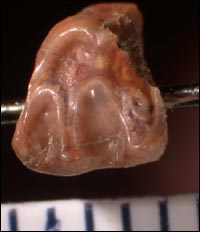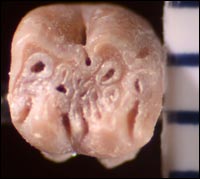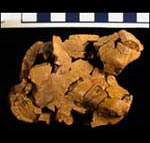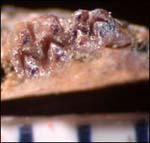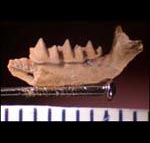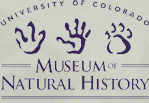 |
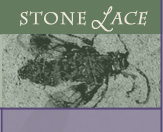 |
||||||||||||||||
|
New Mammal Research at Florissant Research by Marie Worley, Graduate Student, Museum and Field Studies Program, CU Museum
Marie collected fossils from Florissant in a systematic study that consisted of two methods. First, she carefully crawled over the surface of the area, on her hands and knees, picking up any fossil bone fragments or teeth that she could find. This resulted in nine identifiable teeth from the same area in which the Mesohippus jaw was discovered. Later, Marie performed what is called dry screening. Dirt shoveled from the surface of the site is sifted through a series of progressively finer screens, to trap sediment to be sorted later, under magnification. This method added six teeth (all from different animals) and four jaws with teeth in place.
The fossils found at Florissant tell an important part of the story of life in the Eocene. Most of the mammal species found at Florissant have previously only been found at more northern sites in Montana, Nebraska, and Saskatchewan. Notably, these species have not been found at sites of the same age in west Texas, which is geographically closer to Florissant. This suggests that 35 million years ago, the area of Florissant had something in common with Montana, Nebraska and Saskatchewan, and that these areas differed significantly from the existing environment in Texas. Possibilities include differences in climate or elevation, or perhaps even a geographic barrier.
Return to the Museum Research page. |

|
||||||||||||||||
|
|
|||||||||||||||||
|
|||||||||||||||||
